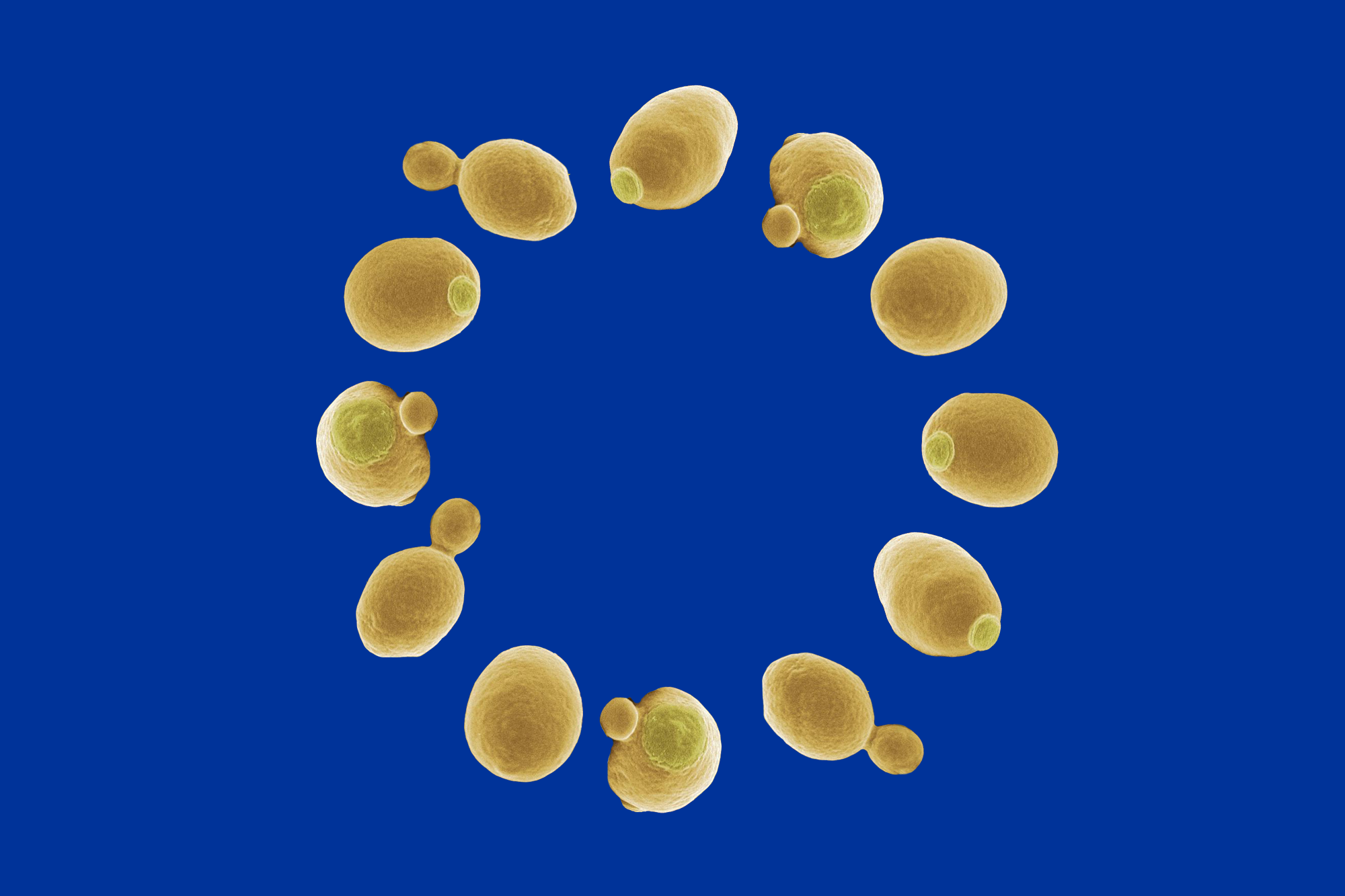
 Feb26 2016, Amsterdam
Feb26 2016, Amsterdam Eurowine #1 – An Introduction
Last Friday saw the rollout of a new wine destined for success, Euro Wine (courtesy of Domenique, key ingredient: the flag of the European Union).
For the non-artists listening, the idea at first seemed plain silly. You can’t make wine out of a flag?! It’s not a fruit or a grain, it’s a flag… a flag! But Domenique calmly explained his modest proposal. He described how the current European symbols are impersonal, they don’t bring people together, but something that does bring people together is alcohol, so why not use alcohol as a catalyst to bring people closer to the symbols of Europe, and why not make that alcohol from the European flag.
For this he took a European flag (washed thoroughly), a few kilos of sugar and some Swedish super yeast, all mixed together in a vat of warm water. This was left in an airtight container for three days in the basement of the Marineterein.

Whatever the atmosphere in that basement it added a certain special something to the concoction. This centuries-old site, a shipyard since the 17th century, which had for hundreds of years been spitting out ship after ship for the Dutch Royal Navy (notably the Hollandia of Cornelis Tromp and the gunboat of Jan van Speijk), a site that housed for a short time the great impressionist painter Van Gogh and which was host to the Nazis during their occupation of the Netherlands, this site, with all its historical significance, it did something special. Either that or it was the ginger syrup Domenique added just before dishing out the hooch, but we’ll go with the Marineterein vibes.
As I took my first sip I expected it would leave a bitter taste in my mouth, but surprising as it sounds, the European Union flag is sweet. In a way this makes sense. Like the flag, it’s a taste with little depth but a lot of power. The flavours are jumbled, they don’t really evoke any strong associations. It’s not like drinking something that might bring forth memories of a special moment or stimulate warm feelings about the place it was made, how could the EU flag come close to doing that? Instead I’m thinking of some drink that has a lot of flavours going on but no clear thread. All in all, a taste that’s bland despite its attempts to be something more (sound familiar?).
"…it has potential, it packs a punch, it’s young, it needs work but it could be the start of something special"
But then I thought about it further. Sure, it lacks the complex depth of flavours you might associate with the booze of the European nation state, the wine of France, Italy and Spain, Scotch whiskey, the lager of Prague, Germany and the Low Countries, the ales and ciders of Britain, Slivovice, Slywowice, Slivovitz, which is to say plum brandy in all its variations in Serbia, Bulgaria, Poland and several other Slavic countries, the kind of booze produced over many years and refined over many more centuries; yes, while it lacks this, it has potential, it packs a punch, it’s young, it needs work but it could be the start of something special.
And besides, the depth it lacks in flavour was more than made up for by the depth of the conversation as we imbibed the freshly brewed wine. In two articles following this one, I will ruminate on two connotations of the wine for the EU project, both of which were discussed in these conversations: the significance of the Swedish recipe and the link between yeast and European economics. Stay tuned, it’s not as dry as it sounds.

Stichting EU2016 Plan C p/a Pakhuis de Zwijger Piet Heinkade 179
1019 HC amsterdam tel 020 - 624 63 80 hello@neweuropeans.org






comments